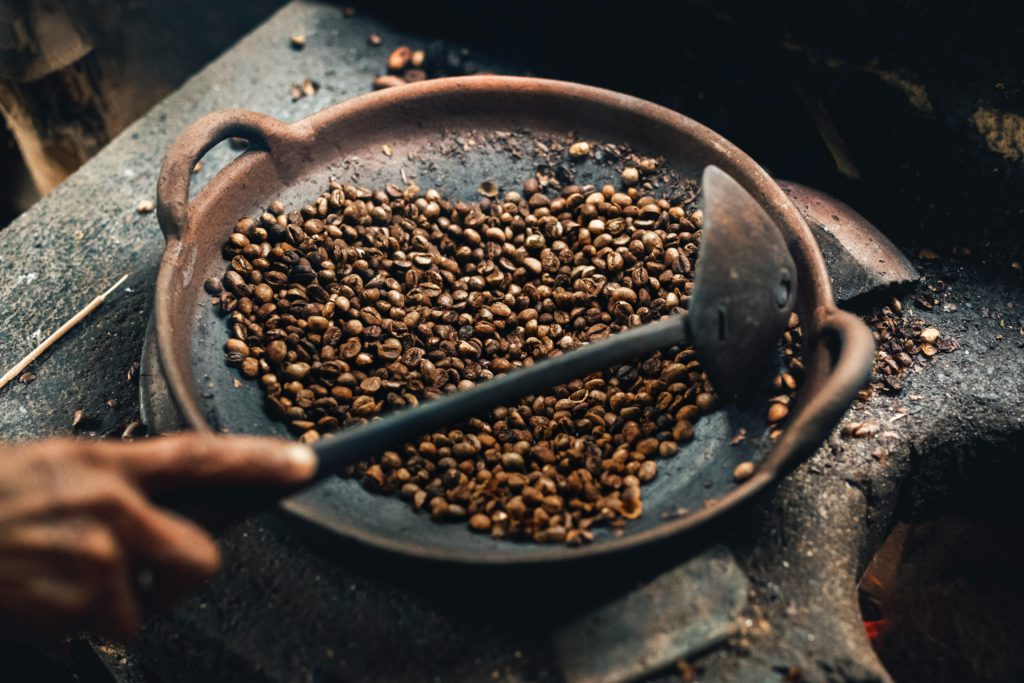This article will examine different roasting methods and best practices in each, and outline what responses are most appropriate to coffee bean roasting. We learned much about the art and science of coffee roasting from the fifth generation Roastmaster at Cambio, who has a wealth of knowledge and experience combining flavours and characteristics from beans from various countries to produce an absolutely optimal flavour.
Understanding the roasting process increases your appreciation of the art and science involved in brewing a perfect cup of coffee. Roasting your coffee beans is a process that can make a big difference in the flavour of the end coffee. Roasting beans for too long can produce burnt flavours, while roasting too short can produce grassy flavours.
If you want to enjoy fresh coffee as good as Italian espresso, it is best to avoid freezing roasted coffee beans because this will diminish flavour. The best way to enjoy the taste of fresh roasted coffee beans Melbourne is to ensure you keep your beans stored efficiently, which helps preserve its rich flavour. Roasting your own coffee beans at home can be an amazing way to learn this skill and enjoy the taste of fresh brewed coffee, but for anyone looking to earn some money off the activity, it is best to have a budget in mind.
When you are home roasting coffee beans, the amount of time that you need can vary wildly depending on which model you pick, that temperature you use, and how many beans you are using at once. Home roasting also guarantees your coffee is the freshest possible, with the roast being either as light or as dark as you like. While you are roasting according to your preferences, not to coffee roaster or cafe standards, it is best to become familiar with the various levels of roasting, so that you can compare other roasters’ work with yours, and sharpen your skills.

The more you know about the raw beans, charging temperatures, steeping rates, and carbonic maceration, the more control you will have over your roasting process, and the better coffee will taste. Further down the coffee roaster’s companion is a thorough, scientific explanation of the roasting process, including heat and energy transfer, physical and chemical changes to beans, and compositions of flavour compounds.
The book also presents the potential causes for deterioration in beans, emphasising the importance of packing for protecting your roasted coffee. Covering topics ranging from green coffee and roasting chemistry, to establishing consistency, to choosing your roasting machine, The Coffee Roasters Companion provides an in-depth look at the coffee roasting process, along with practical tips roasters can immediately implement. This book provides an in-depth look at the history of roasting, from stovetops to huge machines, and tells you why top roasters are so meticulous about their beans.
The Coffee Roasters Companion also includes a chapter about The Three Commandments of Roasting, where Scott Rao outlines the three guidelines that will make you a better roaster. Analysing the chemical-physical transformations coffee beans go through as heat is applied (the roasting process) defines roasting from a technical-scientific perspective.
The longer the roasting process, the more droplets of oils emerge from the beans surface, and that is what defines a coffee’s particular flavour. The same essential oils are used to create crema (but so is oil deposited on the equipment). At the same time, thanks to the pyrolysis process (the internal conversion of beans by heat) and interactions among different elements like sugars and proteins, hundreds of different volatile compounds start popping up as a result of the roasting, which is where we owe coffee’s distinctive flavours.
Our modern roaster uses the enclosed-cylinder method, in which the flames never contact the coffee, which results in beans roasted to perfection, with none of that burnt flavour. The beans are deep flavoured, which puts even the biggest coffee hater to smile. While there are plenty of excellent tasting instant coffees out there, with roasty bean flavours, none compares to fresh brewed coffee grounds.
If you are considering flavours, dark roasted coffees tend to taste really robust, with a bit more bitterness at the end, whereas lighter roasts tend to taste like grains, wood, and occasionally fruits. If you are sensitive to the coffee’s acidity, a lower-acid coffee like Sumatra, or very low-acid coffees (acidity is reduced by longer roast times) like Dark French Roast, will make a great alternative. For filter, syphon, aeropress, and French press, you need a lighter roast, meaning shorter roast times, in order to get the lighter flavour from the beans, richer acid notes, and a lower specific weight, which is ideal for these types of extractions.
